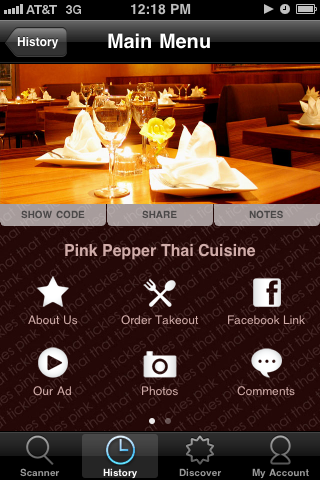Restaurant Apps for Mobile Ordering Provide a Satisfying Experience
 When using a restaurant app, getting information on your mobile about a food establishment is the easy part. The next question is, does the app allow for mobile ordering? How current is that information anyway?
When using a restaurant app, getting information on your mobile about a food establishment is the easy part. The next question is, does the app allow for mobile ordering? How current is that information anyway?
Ordering from restaurants can be a hit or miss affair at the best of times. You might not know if the takeout menu is up to date, or if the delivery time quoted is realistic. And if you try ordering by calling the restaurant directly, you may have to contend with background noise or being put on hold.
We review two smartphone restaurant apps that change the customer experience by providing updated information and mobile ordering: Paperlinks Order Takeout and Snapfinger.
Paperlinks Order Takeout
 As its name suggests, the Paperlinks restaurant app works with takeout menus that are Paperlinks-enabled. As a customer, you scan a quick response (QR) code on the printed menu to gain instant access to an interactive web menu designed for mobile devices. You can choose what you want to eat, give instructions for delivery, and pay using the Paperlinks’ Checkout Cart (you can also add a tip).
As its name suggests, the Paperlinks restaurant app works with takeout menus that are Paperlinks-enabled. As a customer, you scan a quick response (QR) code on the printed menu to gain instant access to an interactive web menu designed for mobile devices. You can choose what you want to eat, give instructions for delivery, and pay using the Paperlinks’ Checkout Cart (you can also add a tip).
If you’re a restaurant owner or manager, the Paperlinks app makes it quick and easy to set up a mobile web page. You can display menu offerings and prices, define contact and billing preferences, and set up default values for tips. Paperlinks Order Takeout makes the static, printed takeout menu more useful for customers and more effective for restaurants, by linking it via QR code to online information that can be constantly updated by the restaurant.
The Order Takeout restaurant app is one example of how Paperlinks is fulfilling its mission “to hyperlink the real world.” As a mobile ordering app, it benefits from a Paperlinks solution package including QR code creation, a free QR code reading app, code generation, a content management system and in-house design and print services. Restaurants can also customize their QR code by themselves by accessing the Paperlinks platform.
(Image, right - Paperlinks screenshot, used with permission)
Snapfinger
Snapfinger is a restaurant locator and food ordering app. It includes a GPS restaurant locator that lets you locate nearby participating restaurants by entering your zip code. It then displays them in a list ranked according to distance. You can then view a restaurant’s menu, place an order, specify your pick-up time and pay, right from your phone. You also get a text message with confirmation of your order after you’ve completed these steps. An added perk is the ability to save orders for the future, so that you can re-order your favorites with one click. The app also provides a map and directions for finding the restaurant.
The mobile app is linked to the point of sale system of each restaurant it partners with, which is how it remains constantly up to date on daily prices and availability. Restaurant menus are displayed in real time to mobile users; so, if a restaurant stops serving its special of the day, it won’t be displayed on the mobile ordering screen. Similarly, if order fill time is increasing due to backlogs of dishes to be prepared, mobile customers are also advised about possible delays on their orders.
Using the Snapfinger application is free if you’re a diner. Restaurants pay Snapfinger’s parent company, Kudzu Interactive, between 3% and 10% of the value of the order received from each diner via Snapfinger mobile ordering. However, restaurants can also recoup their fees based on upsell possibilities in Snapfinger, prompting diners to add items like grilled onions on a hamburger.
Takeout customers using Snapfinger spend about 25% more than they would when ordering from a traditional menu, because of upsells. Snapfinger tools include group ordering and getting location-based, limited-time coupons.
See related articles:
QR Codes a Tasty Payoff For Restaurant Owners
Create QR Codes and Engage Customers With Sticky Mobile
QR Codes and Mobile Strategies For Engaging Customers
{jcomments on}
